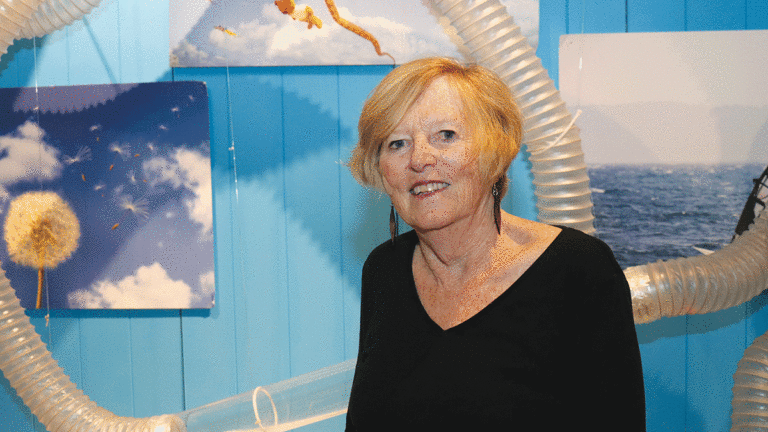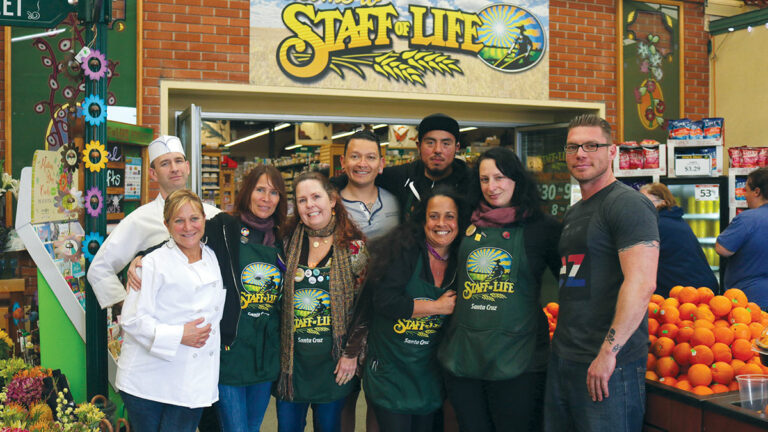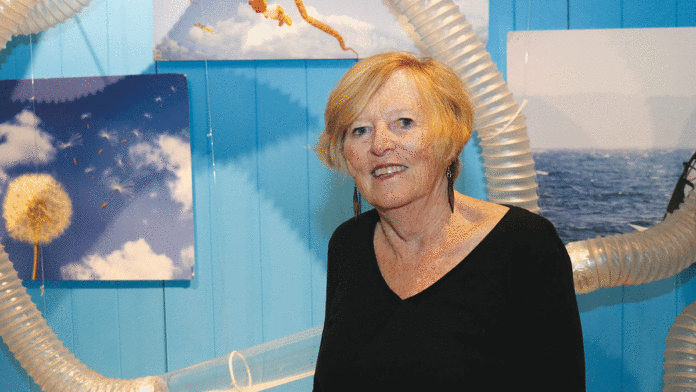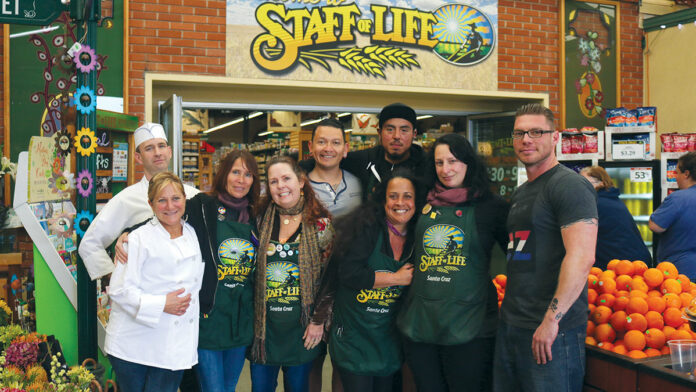At the Children’s Museum of Discovery, volunteer Executive Director Patrice Keet tells me that one of the county’s “best-kept secrets” is the fact that this kid-oriented space nestled in the Capitola Mall needs money to stay alive.
The Museum of Discovery (MOD) is something of a mini-Exploratorium: interactive exhibits on science, music, art, cooking, and ecology are interspersed with games offering cognitive development perks. The nonprofit project was built from the ground up by Keet’s family. Her husband Bob, a doctor, created many of the exhibits, and her niece Bonnie is a co-founder.
The word “sustainability” often evokes ideas like climate change and composting, but MOD’s Sustainability Campaign refers to a newly launched effort to make sure the museum continues to exist.
On a recent Community Saturday, a free admission day courtesy of a sponsor, parents of young children expressed appreciation for the space. “It’s such a unique experience. It serves a need unlike anything else in town,” says Chris Sheehy, an Aptos father of two. “You can lose track of your kid for three minutes and not freak out.”
“We love it. It’s a great place for Santa Cruz to have,” adds Emily Calmette of Aptos, visiting with her husband, Ray, and their almost-2-year-old.
“Her grandmother brings her,” Ray says of the couple’s daughter. “She loves the pizza-making oven.” A tiny Pizza My Heart parlor is set up near the front of the museum, featuring mini booths and supplies for imaginative pizza-making play.
As a relatively new mom and full-time writer, I can see the merits. I’m writing this at one of the museum’s parent benches, after I unleashed my little ones in the museum’s fenced-in toddler zone.
“Even with all the traffic and business, donors are needed,” Keet explains from her seat in the classroom, the shelves behind her stocked with art supplies. Kids’ paintings and collages line the walls. The campaign’s goals are to bring in bigger donors and raise capital for a full-time executive director, and a donor has pledged a $25,000 matching grant. Keet estimates that two-thirds of visitors are members (memberships pricing is tiered, with annual fees from $60-$250), and walk-ins round out the crowd.
When MOD first opened four-and-a-half years ago, Keet, who has a Montessori degree and four grandchildren, was moving on from her full-time career as a family therapist. The Museum of Discovery, she says, fulfills her vision for “enriching multigenerational opportunities.”
The small team tested exhibits from a “mobile museum” in their cars. Keet, who is originally from the Adirondacks and has lived in Santa Cruz for more than 40 years, spent a lot of time seeking an ideal location. She settled on a space in the mall for its accessibility in the center of the county. She and her family built the MOD with grants and persistence.
Today, the museum features “all the wonders of Santa Cruz County,” Keet says. “Agriculture, technology, the redwoods, the ocean—our focus is local.” Keet also brought in former MAH resident artist and founder of the nonprofit Puppetry Institute Ricki Vincent to offer puppetry workshops. Lead teacher Katie Knight holds infant and toddler classes designed by an early childhood education professor at Cabrillo. “‘Rolling motion’ was our theme for April,” Knight says at the front desk. “May is ‘light and shadow,’ so toys and cognitive activities will go around that. We give handouts about the developmental aspects of each activity.”
MOD also sponsors memberships for low-income families. Keet says she doesn’t want any child to look through the windows without being able to enter. Capitola-based attorney Edward W. Newman provides a grant for such memberships. “I was enthusiastic because access to MOD is a great advantage for any child, and should not be denied for economic reasons,” Newman told GT in an email. “We have helped about 150 families enjoy memberships each of the last three years. For us, it is about helping make a level playing field.”
As the museum prepares to move onto its next stage, Keet, too, begins a new chapter: she will focus on writing a memoir on her experience as a foster parent. MOD will send her off with an adults-only extravaganza on June 8, a casino-riverboat-themed fundraiser featuring food and drink, aerial artists and a silent auction, with proceeds benefiting the museum.
Keet has loved watching children grow up. “We meet pregnant moms, and then their kids are running around the museum. People meet here and form playgroups,” she says. “It’s serendipitous, a place to make friends. New parenthood can be isolating.”
When Keet retires, Rhiannon Crain will step into the role of interim director, a move she is delighted to make after serving on the MOD board for six years.
“It has been a pleasure to watch the museum unfold from just an idea to a true community-built entity with a real focus on kids,” says Crain.
For more information on the Museum of Discovery, visit sccmod.org.
























